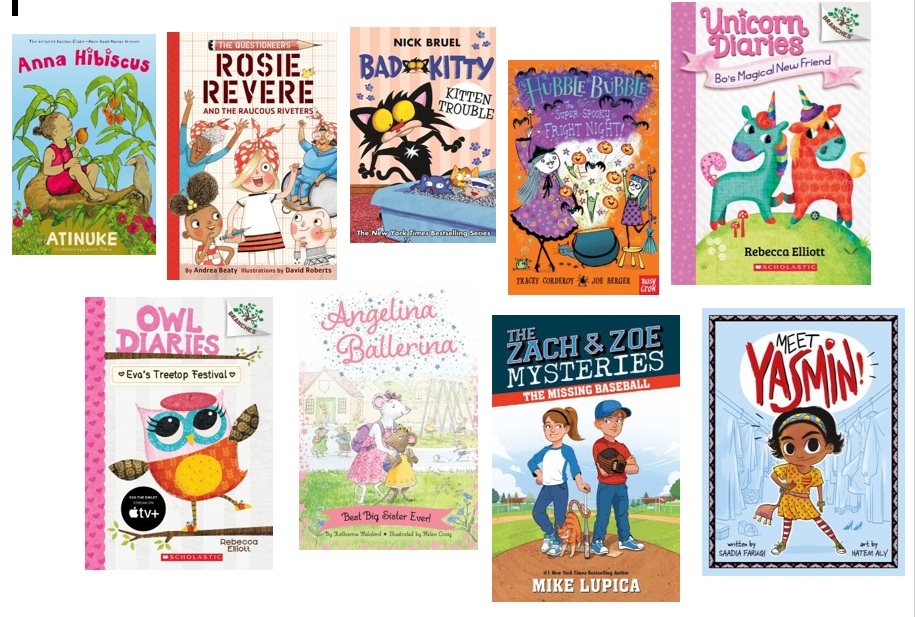What To Read After Early Readers
Books for First and Second Graders who are Moving from Readers to Chapter Books
By Melody Palmer, MLIS, Youth Librarian, South Broken Arrow Library
It’s a dilemma everyone faces in their reading journey. What should we read when we are ready to move to the next level of reading material? In this case, parents and educators want to guide young children as they graduate from reading “Readers,” with their very simple story structure and limited vocabulary to “Chapter Books,” with their more interesting stories and larger vocabulary pools. The challenge is that children still enjoy looking at pictures and get a bit overwhelmed if there are too many words on the pages, but their vocabulary is advancing well past that of Readers and they have a longer attention span.
Enter early chapter books. They often hit that sweet spot with pictures and are a length that engages their growing attention span. The most popular series are Junie B. Jones by Barbara Park and Magic Treehouse books by Mary Pope Osborne, but there is a wide world of early chapter books beyond those series. Here are just a few options for budding bibliophiles. These were selected to appeal to a wide range of readers.
- Anna Hibiscus by Atinuke
- Questioneers series by Andrea Beaty (Rosie Revere and the Raucous Riveters is book 1)
- Bad Kitty by Nick Bruel
- Hubble Bubble by Tracey Corderoy
- Unicorn Diaries by Rebecca Elliot
- Owl Diaries by Rebecca Elliot
- Angelina Ballerina by Katharine Holabird
- Zach and Zoe Mysteries by Mike Lupica
- Rainbow Fairies by Daisy Meadows
- Amelia Bedelia by Herman Parish
- Ivy + Bean by Annie Barrows and Sophie Blackall
- Yasmin by Saadia Faruqi
But what if your child doesn’t like fiction? What if nothing but the facts appeals? How about introducing your child to nonfiction if they just want to read about sharks or dinosaurs, trains or tanks, or which animal would win in a contest of two very different animals? Nonfiction in the child’s interest area is always a solid choice when considering books to suggest. Usually the vocabulary is a bit more advanced, and the reading level can be significantly higher, BUT the child is motivated to read it because he/she is interested in the topic. It’s also usually in bite-size pieces to make it easy for them to work through.
Helping your child decide what to read next as they graduate from Readers to Chapter Books doesn’t have to be stressful. Look at the book with the child to see if the number of words on the page and the size of the print looks like a comfortable fit. Also, remember that it’s OK to not finish a book that doesn’t pull you in or is too hard; we want reading to be fun, not a slog. So let your child try on different kinds of books and decide what works best for them. The good news is, at the library, you can check out and return as many as needed when deciding what kinds of books are best for each individual, regardless of age.
